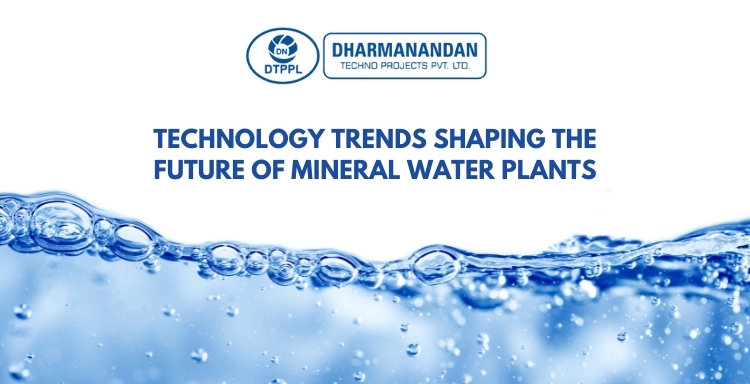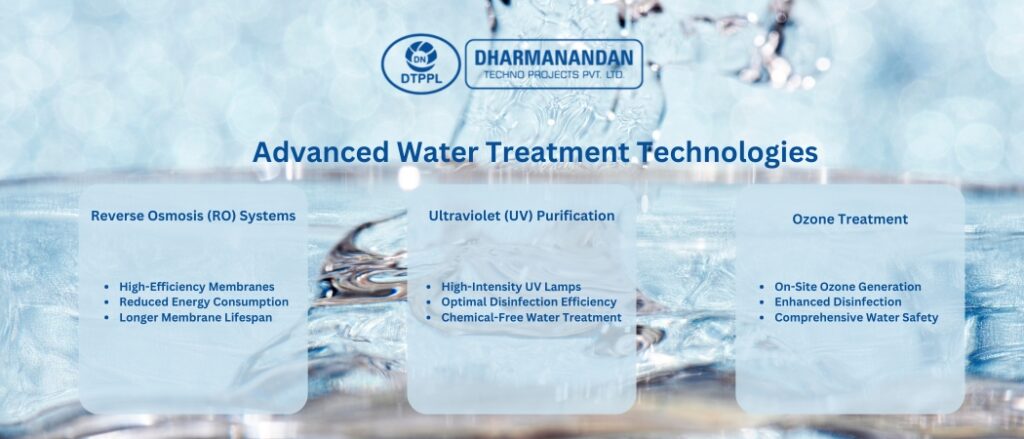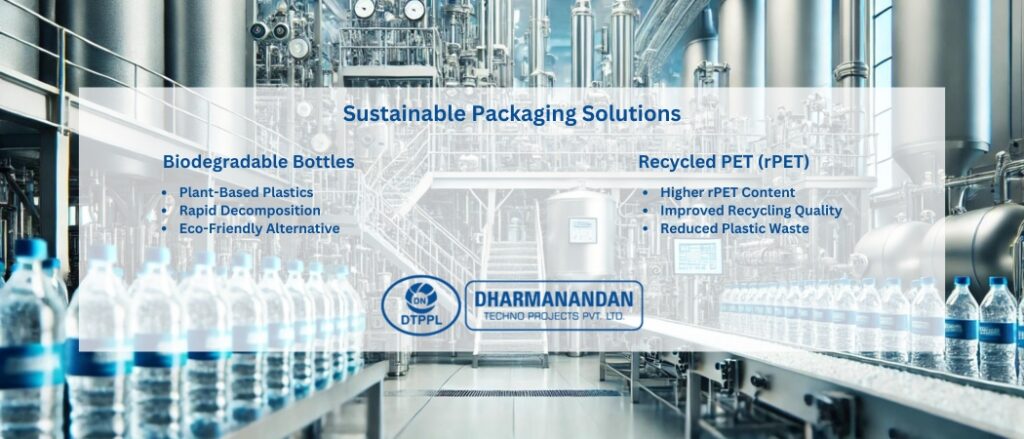
Table of Contents
Technology Trends Shaping the Future of Mineral Water Plants
August 13, 2024
The mineral water industry is at a pivotal moment, with technological advancements driving significant changes in how mineral water is produced, treated, and packaged. As consumer demands evolve and environmental concerns intensify, mineral water plants are increasingly adopting innovative technologies to stay competitive and sustainable. This article explores the latest technology trends that are transforming the mineral water industry, focusing on advanced water treatment technologies, smart water management systems, sustainable packaging solutions, and the impact of automation and digitalization.
1. Advanced Water Treatment Technologies
At the heart of any mineral water plant is its water treatment system. Recent advancements in water treatment technologies are enhancing the efficiency, safety, and sustainability of mineral water production.
Reverse Osmosis (RO) Systems
Reverse Osmosis (RO) remains a cornerstone of modern water treatment. Recent innovations in RO technology have led to the development of more efficient membrane materials and improved energy consumption. Advanced RO systems now feature:
- High-Efficiency Membranes: New membrane materials have higher flux rates and greater resistance to fouling, which reduces the need for frequent cleaning and extends the lifespan of the membranes.
- Energy Recovery Devices: Integrated energy recovery devices significantly lower the energy required for the RO process by capturing and reusing energy from the pressurized water.
These advancements not only improve the quality of treated water but also reduce operational costs, making them essential for mineral water plants aiming to balance quality and cost-effectiveness.
Ultraviolet (UV) Purification
Ultraviolet (UV) purification technology has become a popular choice for mineral water plants due to its effectiveness in disinfecting water without using chemicals. Key developments in UV technology include:
- High-Intensity UV Lamps: Modern UV systems use high-intensity lamps that provide more effective disinfection while using less energy.
- Enhanced Reactor Designs: New reactor designs ensure that water is exposed to UV light for the optimal amount of time, improving disinfection efficiency.
UV purification not only helps in maintaining high water quality but also addresses consumer concerns about chemical residues in their drinking water.
Ozone Treatment
Ozone treatment is gaining traction as a powerful alternative to traditional chemical disinfectants. Recent innovations in ozone technology include:
- On-Site Ozone Generation: Advances in ozone generation technology allow for the production of ozone on-site, reducing the need for storage and handling of ozone gas.
- Enhanced Ozone Contactors: Improved contactor designs ensure more effective contact between ozone and water, enhancing disinfection and oxidation processes.
Ozone treatment offers high disinfection efficiency and can be used in combination with other treatment technologies to ensure comprehensive water safety.

2. Smart Water Management Systems
The integration of smart technologies into water management systems is revolutionizing mineral water plants by providing real-time insights and automation capabilities.
Real-Time Monitoring
Smart water management systems use sensors and IoT (Internet of Things) devices to monitor various parameters of the water treatment process continuously. These systems provide:
- Instant Data Collection: Real-time data on water quality parameters such as turbidity, pH, and conductivity help operators make informed decisions.
- Automated Alerts: Sensors detect deviations from normal operating conditions and send automated alerts to operators, allowing for prompt intervention.
Real-time monitoring enhances the efficiency of water treatment processes and helps ensure consistent product quality.
Predictive Maintenance
Predictive maintenance uses data analytics and machine learning algorithms to anticipate equipment failures before they occur. This approach offers several advantages:
- Reduced Downtime: By predicting when maintenance is needed, plants can schedule repairs during non-peak hours, minimizing production disruptions.
- Cost Savings: Preventing unexpected breakdowns reduces repair costs and extends the lifespan of equipment.
Predictive maintenance enables mineral water plants to operate more smoothly and efficiently, contributing to overall cost savings and improved reliability.

3. Sustainable Packaging Solutions
Sustainability has become a critical focus for the mineral water industry, particularly in packaging. Innovations in packaging technologies are aimed at reducing environmental impact and meeting consumer demand for eco-friendly products.
Biodegradable Bottles
Biodegradable bottles are designed to break down more quickly than traditional plastic bottles, reducing their environmental footprint. Recent advancements in biodegradable materials include:
- Plant-Based Plastics: New materials derived from renewable resources, such as corn starch or sugarcane, are being used to create bottles that decompose more rapidly.
- Enhanced Degradation Processes: Improvements in the degradation processes ensure that biodegradable bottles break down completely without leaving harmful residues.
Biodegradable bottles offer a sustainable alternative to conventional plastics and help mineral water plants address environmental concerns.
Recycled PET (rPET)
The use of recycled PET (rPET) is an effective way to reduce the environmental impact of mineral water packaging. Key trends in rPET technology include:
- Increased rPET Content: Advances in recycling technology allow for higher percentages of rPET in bottles, reducing the need for virgin plastic.
- Enhanced Recycling Processes: Improved sorting and cleaning technologies enhance the quality of recycled PET, making it a viable option for high-quality packaging.
By incorporating rPET into their packaging, mineral water plants can reduce their reliance on new plastics and contribute to a circular economy.

4. Automation and Digitalization
The rise of automation and digitalization is transforming mineral water plants, making them more efficient and adaptable to changing market conditions.
Automated Production Lines
Automation in production lines has led to significant improvements in efficiency and consistency. Key developments include:
- Robotic Handling: Robots are used for tasks such as bottle capping, labeling, and packaging, reducing the need for manual labor and improving precision.
- Advanced Control Systems: Modern control systems provide real-time monitoring and control of production processes, allowing for rapid adjustments and minimizing errors.
Automated production lines enhance the scalability of mineral water plants and improve overall operational efficiency.
Data Analytics and Artificial Intelligence (AI)
Data analytics and AI are being used to optimize various aspects of mineral water production. Key applications include:
- Process Optimization: AI algorithms analyze data from production processes to identify inefficiencies and suggest improvements.
- Consumer Insights: Data analytics provides insights into consumer preferences and trends, helping plants tailor their products and marketing strategies.
By leveraging data analytics and AI, mineral water plants can make more informed decisions and respond more effectively to market demands.
Conclusion
The future of mineral water plants is being shaped by a range of technological advancements that enhance water treatment, improve efficiency, and promote sustainability. From advanced water treatment technologies and smart water management systems to sustainable packaging solutions and automation, these trends are driving the industry forward. As technology continues to evolve, mineral water plants that embrace these innovations will be better positioned to meet consumer expectations, address environmental challenges, and thrive in an increasingly competitive market.
About Author

Director – Global Marketing and Sales
Mr. Bhavesh from Dharmanandan Techno Projects Pvt. Ltd. has played a pivotal role in elevating the DTPPL brand to the global stage, leveraging his exceptional expertise in marketing and communications. He is committed to helping clients achieve significant growth while strengthening their own brands. Dharmanandan Techno Projects Pvt. Ltd. is a leading manufacturer and supplier of water purification systems and turnkey solutions for mineral water plants. With years of experience in designing and delivering high-quality water treatment solutions, the company provides end-to-end services, including system design, installation, maintenance, and ongoing support. Specializing in scalable and customizable water plants, DTPPL has successfully served industries worldwide, ensuring clean and safe drinking water across diverse applications.




